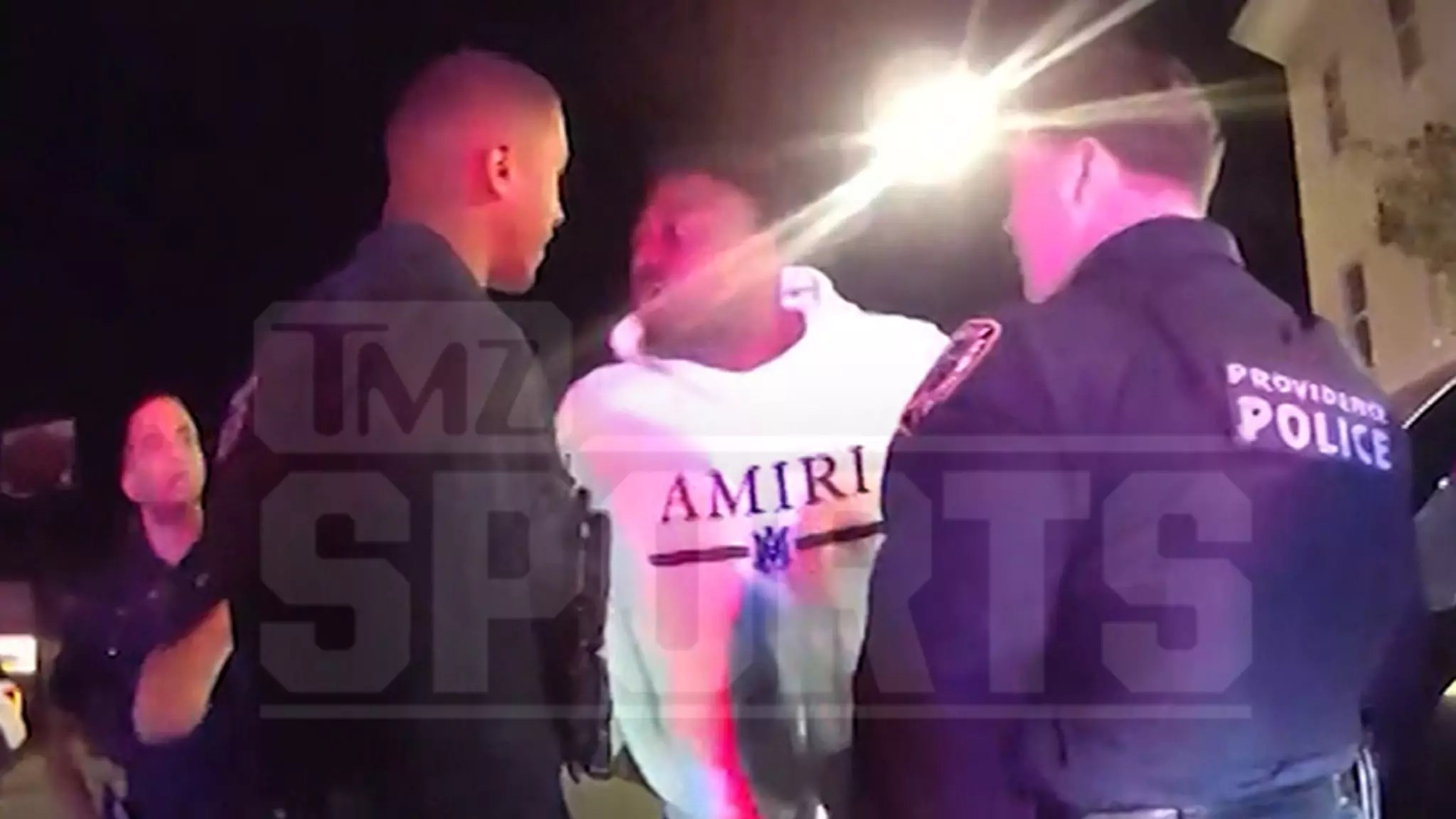The recent altercation involving Christian Barmore, a defensive tackle for the New England Patriots, and the Providence Police Department (PPD) has sparked significant public debate, particularly around issues of police conduct and perceptions of racial profiling. While Barmore described his experience as one marked by “unprofessional racism,” the release of police body camera footage paints a much more complex picture that raises questions about behavior on both sides of the interaction.
On a seemingly uneventful Wednesday evening, Barmore found himself being pulled over by Providence police. Body camera footage reveals that as officers approached his vehicle, Barmore openly expressed his skepticism regarding the motive behind the traffic stop. His reaction highlights a common sentiment often expressed by individuals who feel they have been treated unfairly by law enforcement. Barmore vehemently claimed he wasn’t speeding or breaking the law, stating, “If I really wanted, I would’ve outran y’all.” This response indicates a deeper frustration that stems not just from the traffic stop itself but also from a broader feeling of being targeted.
Yet, as the encounter unfolded, the officers discovered that the vehicle was unregistered. This factor played a crucial role in the officers’ decision to tow Barmore’s Jeep. He asserted that he was not willing to surrender his vehicle, leading to escalating tensions. The exchange quickly turned confrontational, suggesting a divergence between Barmore’s perception of the stop and the police’s justification for their actions.
From a tactical standpoint, the officers seemed to follow standard protocol when they attempted to enforce vehicle registration laws. They requested Barmore to exit the vehicle after informing him that the car would be towed. However, their insistence and the tone employed during the interaction may have contributed to Barmore’s defensive posture. At one point, an officer remarked on Barmore’s attitude, saying, “I can’t read that plate. You act like I’m harassing you for no reason.” The officer’s statement underscores an apparent communication breakdown, where Barmore felt cornered and misunderstood while the police felt justified in their actions.
The narrative presented by Barmore, particularly regarding the alleged racism, seems to stem from a place of deep personal experience and societal trauma. Admittedly, racial prejudice is a pervasive issue in police interactions, particularly among young Black men. Barmore’s belief that he was subject to unprofessional behavior raises important questions about the broader systemic issues that can color such encounters. While Barmore’s heated rhetoric might be interpreted as a coincidental outburst of frustration in a high-stress situation, it undeniably points to a deeper societal issue.
The Role of Body Camera Footage
The release of body camera footage exemplifies an ongoing debate about transparency and accountability in police conduct. This footage serves not only as a tool for assessing the officers’ actions but also as a means to evaluate the broader dynamics of the encounter. The stark contrast between Barmore’s characterization of the incident and the footage begs the question: what is reality from both views?
Though Barmore initially accused the police of racism, the footage illustrates a more complicated scenario where both sides contributed to the altercation. The phone interactions, invasive questions, and refusal to comply from Barmore illustrate a notable real-time conflict. While one might defend the notion of resisting what they see as disproportionate treatment, one must also examine how that resistance can escalate a situation, leading to the tactical necessity of law enforcement to assert control.
The incident involving Christian Barmore and the Providence Police serves as a microcosm of ongoing tension between law enforcement and communities of color. It encapsulates the challenges of communication, misinterpretation, and the overarching societal narratives regarding race and authority. As society grapples with these complex issues, it is essential for both law enforcement and civilians to engage in ongoing dialogues to bridge these gaps, fostering understanding and improving interactions to avert similar confrontations in the future. In navigating these incidents, context, perspective, and communication cannot be overstated; they are core to achieving mutual respect and understanding in any encounter.







Leave a Reply